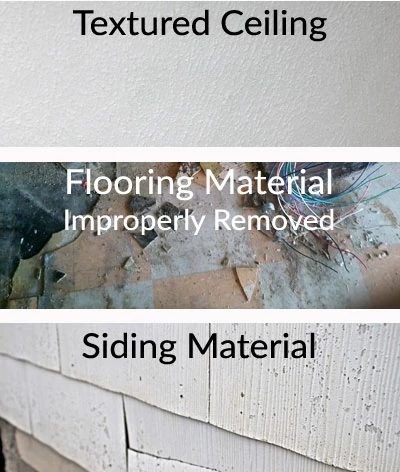Asbestos
Asbestos is the common name for a group of naturally occurring minerals that separate into strong fibers with exceptional thermal and electrical insulating properties. Because of these properties, asbestos was widely used in building materials before the mid-1980s for fireproofing and insulation. This was before health risks associated with asbestos exposure were fully known. Today, asbestos use is not completely banned and although uncommon, it may still be found in some building products.
Health Effects
Individual asbestos fibers are so small that they cannot be seen without the aid of a microscope, and the small, buoyant fibers can easily be inhaled or swallowed, causing a number of serious health effects. There is no known safe level of asbestos exposure. People exposed to higher concentrations of airborne asbestos have a greater risk of developing asbestos-related diseases. There is also a delayed effect or latency period for exposure, so health effects may not appear for many years. If you know you have been exposed, inform your physician so that they can monitor your condition.
Tips for Homeowners
If you suspect that an asbestos-containing material was used on or in the construction of your home, here are some tips to keep in mind:
Asbestos-containing materials that are in good condition and are not sanded or sawed are often better left in place without being disturbed. Consider covering the asbestos material with another non-asbestos material for additional stability and protection.
It is a good idea to consult with an accredited asbestos inspector before beginning home renovations or removal of suspected asbestos-containing building materials to minimize exposure risks. This is especially true if a suspect material is located within the home, and the family will continue to reside there after the renovation/removal is complete.
Some building materials that are considered suspect for asbestos and are commonly disturbed during renovations and/or demolitions are textured ceiling, flooring, roofing, and siding.
Textured (or popcorn) ceiling is considered a friable (crumbly) material and extra care must be taken during removal to prevent asbestos fibers from being released.

Flooring, roofing, or siding materials are typically not considered friable and if handled properly, can be removed without making asbestos fibers airborne.

